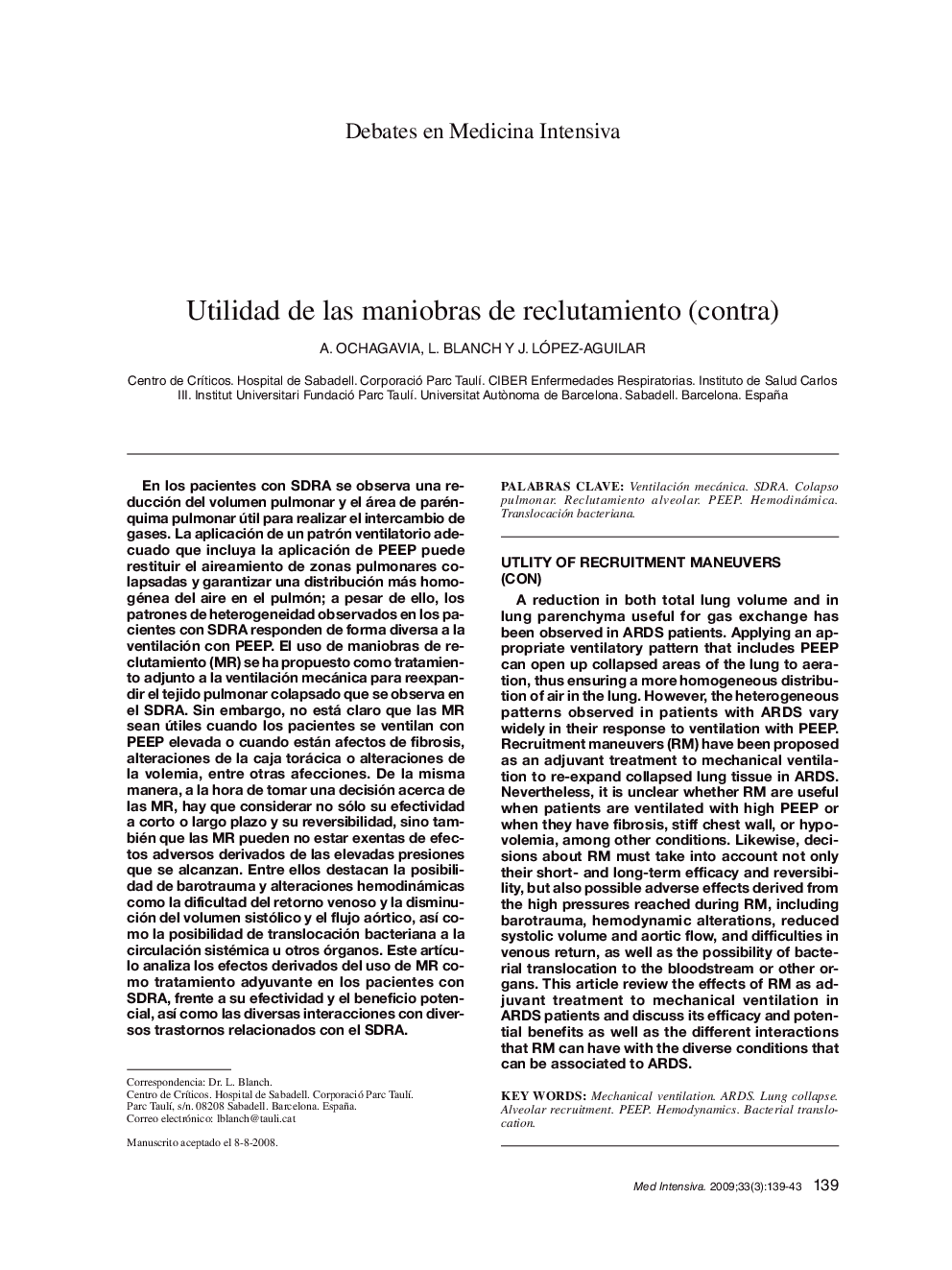| Article ID | Journal | Published Year | Pages | File Type |
|---|---|---|---|---|
| 3113381 | Medicina Intensiva | 2009 | 5 Pages |
Abstract
A reduction in both total lung volume and in lung parenchyma useful for gas exchange has been observed in ARDS patients. Applying an appropriate ventilatory pattern that includes PEEP can open up collapsed areas of the lung to aeration, thus ensuring a more homogeneous distribution of air in the lung. However, the heterogeneous patterns observed in patients with ARDS vary widely in their response to ventilation with PEEP. Recruitment maneuvers (RM) have been proposed as an adjuvant treatment to mechanical ventilation to re-expand collapsed lung tissue in ARDS. Nevertheless, it is unclear whether RM are useful when patients are ventilated with high PEEP or when they have fibrosis, stiff chest wall, or hypovolemia, among other conditions. Likewise, decisions about RM must take into account not only their short- and long-term efficacy and reversibility, but also possible adverse effects derived from the high pressures reached during RM, including barotrauma, hemodynamic alterations, reduced systolic volume and aortic flow, and difficulties in venous return, as well as the possibility of bacterial translocation to the bloodstream or other organs. This article review the effects of RM as adjuvant treatment to mechanical ventilation in ARDS patients and discuss its efficacy and potential benefits as well as the different interactions that RM can have with the diverse conditions that can be associated to ARDS.
Keywords
Related Topics
Health Sciences
Medicine and Dentistry
Critical Care and Intensive Care Medicine
Authors
A. Ochagavia, L. Blanch, J. López-Aguilar,
